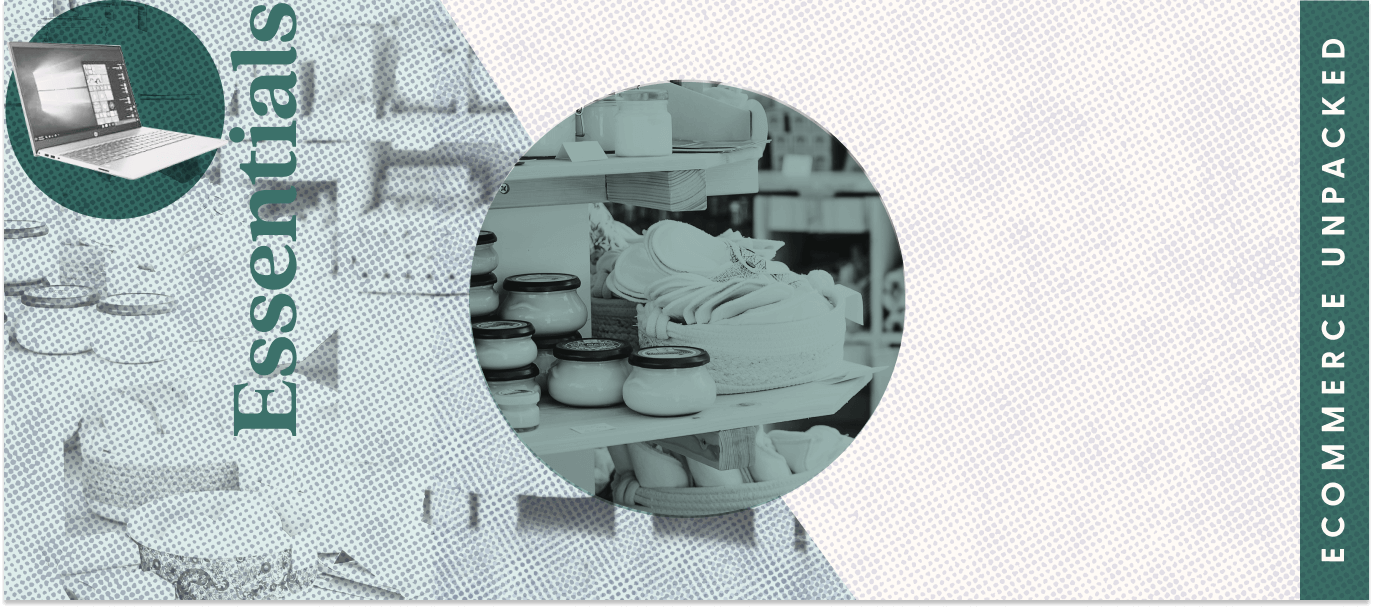Before an ecommerce business can amaze customers with incredible service and fast delivery, they need products to sell. If that business isn’t going to manufacture the products themselves, the solution is product sourcing.
Read on to learn how to find the right products, how to vet suppliers, and much more in this complete sourcing guide.
Key takeaways
- Online product sourcing is the process of finding suppliers of products for a business to sell via the internet.
- Popular product sourcing tactics include buying from artisanal makers, sourcing from manufacturers or wholesalers, partnering with dropshippers, and using trade shows for research and networking.
- When developing a product sourcing strategy, conduct thorough product research, learn from other businesses, evaluate supplier performance, and craft a backup plan in case a supplier fails to deliver.
- If using a product sourcing agent, make sure to check their business license, verify their industry expertise, and ensure they have effective communication skills.
Understanding online product sourcing
Online product sourcing is the process of finding suppliers of the products you want to sell.
The product sourcing process involves the following:
- Identifying a product you want to sell: Ideally, you’ll know everything about the product you want to sell, from its size and color to its function. The more specific you can get, the better.
- Analyzing vendors: Find people who make the product you want to sell, and determine what makes them different from the competition. At this stage of the process, you’ll also research pricing.
- Making deals with your partner: You’ll need contracts that specify costs and delivery terms, among other details. These negotiations are critical to your success.
Types of product sourcing
Product sourcing options in today’s market are vast, whether you want to sell an original and new product in your online store or something you’ve seen elsewhere.
These are a few types of product sourcing methods you can use to sell online goods and services:
Do-it-yourself (DIY) products & services
Machine-made products can be durable, beautiful, and relatively inexpensive. But the Journal of Marketing reports that these items are missing a critical element: personal craftsmanship. Handmade products have more value to discerning buyers because they’re made with care by an individual and not a machine.
Selling DIY products comes with a range of benefits, including:
- Strict quality control
- Unique products
- Tight control over raw materials
Many artisan products are made by small or independent businesses, which you can find through web searches or on platforms like Etsy. Just ensure that you’re clear with the makers that you intend to resell their products at a markup. Be sure, too, to research and adhere to the guidelines of any selling platform you use, as some prohibit reselling certain types of products.
Manufacturers or wholesalers
Many manufacturers and wholesalers have warehouses filled with high-quality products you could sell to your customers. Wholesale products can come with discounts, and you could opt to pocket those profits.
Wholesalers could allow you to find more profitable products to sell to your customers. If the partner you choose has plenty of diverse inventory, you could pick and choose items you want.
You could choose a direct-to-consumer (DTC) model and push products right from the warehouse to your buyer rather than stepping into the middle of the purchase process. Companies like Nike use this model, and it represents an increasingly large portion of the company’s revenue each year.
To use this model, find a manufacturer or wholesaler with a product you like, and set up contracts that allow you to sell those items to your customers.
Dropshipping
Imagine finding a product, processing the sale, and asking another vendor to fulfill the order. Dropshipping makes this possible.
With dropshipping, you won’t need to invest in maintaining inventory or staff in-house to fulfill orders. You could also offer a wide selection of products immediately, with no need to maintain that inventory yourself.
You can find the right dropshipping supplier by doing the following:
- Contacting manufacturers directly
- Heading to a trade show
- Using Google search
Trade shows
Thousands of trade shows happen every year, and 90% of attendees say they’re searching for new products, according to Exponents. You could examine product quality in person at trade shows, and the connections you make could deepen in further conversations.
Find a trade show devoted to the products and services you want to offer, and take your time wandering from booth to booth. Take home plenty of business cards and samples so you can hold more in-depth conversations later.
Improving your product sourcing strategy
Whatever sourcing methods you choose, developing an effective product sourcing strategy is critical. Here are some key steps to follow:
1. Conduct thorough product research
According to Google, more than half of all shoppers do research before they buy to ensure they’re making the best choice possible. You should do the same.
Conduct this research on various platforms, including:
- eBay
- Etsy
- Amazon
Dive into specifications, features, customization, raw materials, and more. Gaining extensive knowledge of your product will help you choose the appropriate supplier during your outreach. What’s more, you’ll be able to share that detailed information on your product pages.
2. Learn from other businesses
You’re not required to start from scratch. Plenty of other companies use online sourcing methods. You can learn from their successes and mistakes.
Reach out to peers at trade shows, on social media, and through email. Ask them how they found the perfect products and suppliers for their businesses. Invite them to share their mistakes as well, and take notes.
The ecommerce market is vast, but it’s also close-knit. Chances are, you’ll find someone willing to mentor you as you get started.
3. Evaluate supplier performance
Your supplier is critical to your success, so it’s important to make this decision carefully.
Don’t rely on the company’s marketing materials to make your choice. Dig deeper. For example, take the time to read online reviews.
Once you’ve found someone that seems right for you, initiate a trial period. Set up a few mock orders with trial payments and see how the process goes. These dry runs can reveal issues you’ll want to avoid.
4. Craft a backup plan
Working with just one supplier can be risky. If something goes wrong, you’ll be left with no alternative way to make your customers happy.
To avoid this, ensure that you always have another supplier in the wings.
Using a product sourcing agent
A product sourcing agent is a third party that can locate and source products and manufacturers on your behalf.
Plenty of sourcing agents exist, and you should choose them carefully. Below are the items you should check before you hire this important person to work for you.
Business license
A business license provides legal permission for a company to do business within the city and/or state in which they’re located. A license can also help you track a company in case your agent does something wrong.
Industry expertise
Experience matters. The longer an agent has worked with suppliers, the better they’ll be able to serve you.
Ask your candidates for resumes and references. Look for a history of working with companies that are in a field similar to yours.
Effective communication skills
Your sourcing agent should be prompt, pleasant, and responsive. They should be capable of working both with you and with your potential suppliers. They might represent you at trade shows, addressing product quality. And they might set up your dropshipping agreements too.
If you’re working with overseas companies, your sourcing agent could be a critical part of your product sourcing strategy. They should speak the same language as your potential suppliers, and they should understand the customs of those suppliers.
Start your business well with proper product sourcing
Product sourcing can be an effective way to deliver value to customers. You could make all the products yourself, or you could find someone else to make them for you. By the same token, you could research your products yourself, or you could hire someone else to do the work for you.
Build a strategy that suits your needs, skills, and goals, and make sure to learn from the experience of similar businesses.
FAQs on where to buy products to sell online
What are the best sites to use when looking for wholesale suppliers?
Use Google to identify top vendors and suppliers, or run searches for topics like “best wholesale suppliers” and read blogs written by companies about these topics. You can glean valuable tips from those with more experience than you.
Can you use dropshipping in other countries?
You can, and this strategy can reduce your shipping costs if your buyers and suppliers are in the same country.
Sources
[1] Mobile Fact Sheet (Pew Research Center)
[2] Global Retail Ecommerce Sales 2014 to 2026 (Statista)
[3] Consumers Value Handmade Products: What's Love Got to Do With It? (Phys Org)
[4] Nike Brand's Direct to Consumer Revenue Worldwide from Fiscal Year of 2009 to 2022 (Statista)
[5] 22 Important Trade Show Statistics (Jobs in Marketing)
[6] Research Before Purchase Statistics (Think With Google)
[7] 10 Online Review Statistics (Oberlo)



